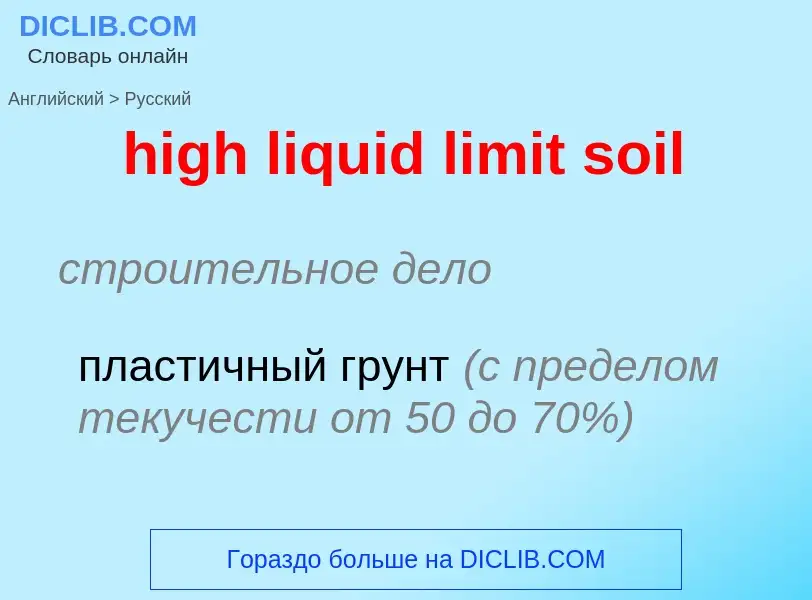Traduzione e analisi delle parole tramite l'intelligenza artificiale ChatGPT
In questa pagina puoi ottenere un'analisi dettagliata di una parola o frase, prodotta utilizzando la migliore tecnologia di intelligenza artificiale fino ad oggi:
- come viene usata la parola
- frequenza di utilizzo
- è usato più spesso nel discorso orale o scritto
- opzioni di traduzione delle parole
- esempi di utilizzo (varie frasi con traduzione)
- etimologia
high liquid limit soil - traduzione in russo
строительное дело
пластичный грунт (с пределом текучести от 50 до 70%)
общая лексика
жидкостная хроматография высокого разрешения
Definizione
Wikipedia
The Atterberg limits are a basic measure of the critical water contents of a fine-grained soil: its shrinkage limit, plastic limit, and liquid limit.
Depending on its water content, soil may appear in one of four states: solid, semi-solid, plastic and liquid. In each state, the consistency and behavior of soil are different, and consequently so are its engineering properties. Thus, the boundary between each state can be defined based on a change in the soil's behavior. The Atterberg limits can be used to distinguish between silt and clay and to distinguish between different types of silts and clays. The water content at which soil changes from one state to the other is known as consistency limits, or Atterberg's limit.
These limits were created by Albert Atterberg, a Swedish chemist and agronomist, in 1911. They were later refined by Arthur Casagrande, an Austrian-born American geotechnical engineer and a close collaborator of Karl Terzaghi (both pioneers of soil mechanics).
Distinctions in soils are used in assessing soil which is to have a structure built on them. Soils when wet retain water, and some expand in volume (smectite clay). The amount of expansion is related to the ability of the soil to take in water and its structural make-up (the type of minerals present: clay, silt, or sand). These tests are mainly used on clayey or silty soils since these are the soils which expand and shrink when the moisture content varies. Clays and silts interact with water and thus change sizes and have varying shear strengths. Thus these tests are used widely in the preliminary stages of designing any structure to ensure that the soil will have the correct amount of shear strength and not too much change in volume as it expands and shrinks with different moisture contents.



![[[HILIC]] Partition Technique Useful Range [[HILIC]] Partition Technique Useful Range](https://commons.wikimedia.org/wiki/Special:FilePath/HILIC Partition Method Graphic.png?width=200)


.jpg?width=200)
